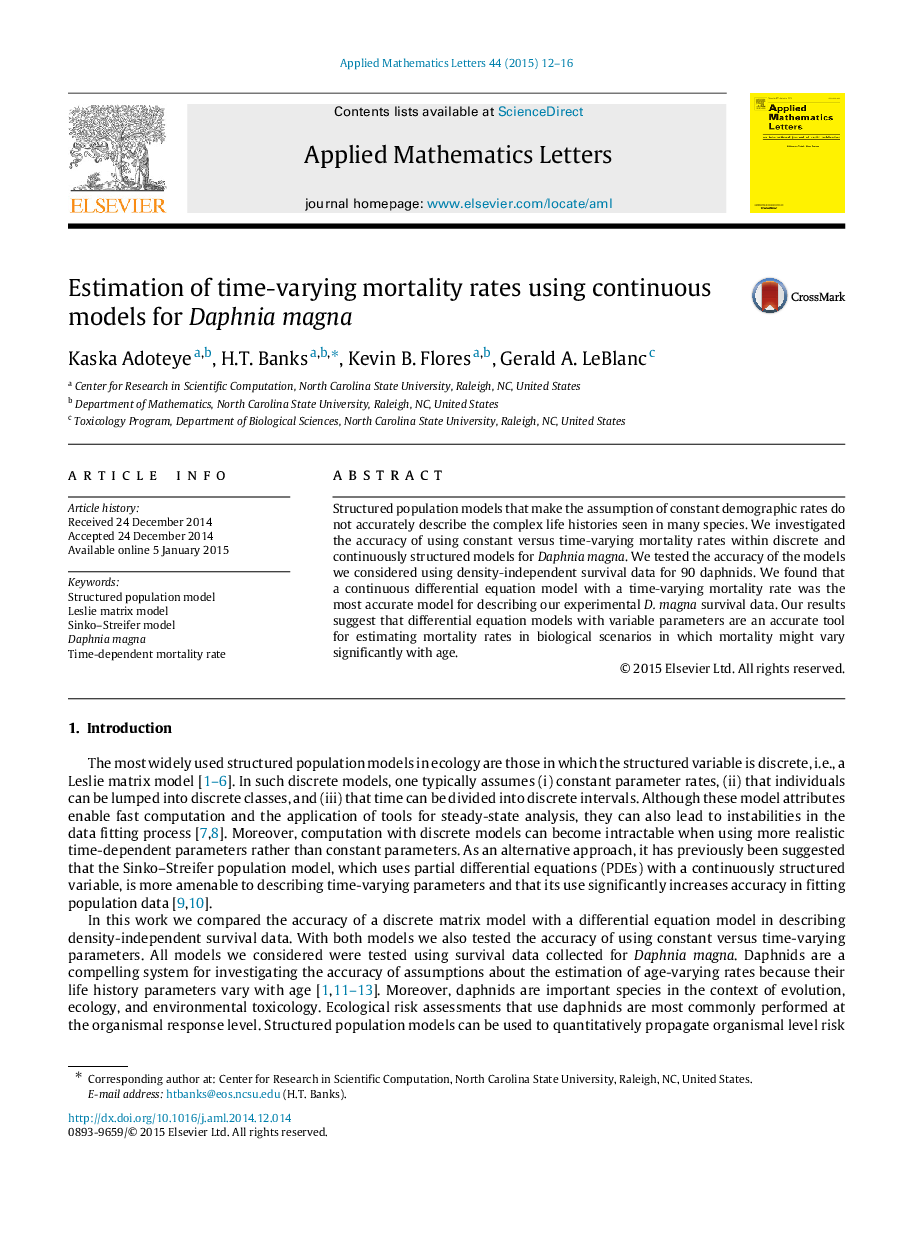| Article ID | Journal | Published Year | Pages | File Type |
|---|---|---|---|---|
| 1707764 | Applied Mathematics Letters | 2015 | 5 Pages |
Structured population models that make the assumption of constant demographic rates do not accurately describe the complex life histories seen in many species. We investigated the accuracy of using constant versus time-varying mortality rates within discrete and continuously structured models for Daphnia magna. We tested the accuracy of the models we considered using density-independent survival data for 90 daphnids. We found that a continuous differential equation model with a time-varying mortality rate was the most accurate model for describing our experimental D. magna survival data. Our results suggest that differential equation models with variable parameters are an accurate tool for estimating mortality rates in biological scenarios in which mortality might vary significantly with age.
